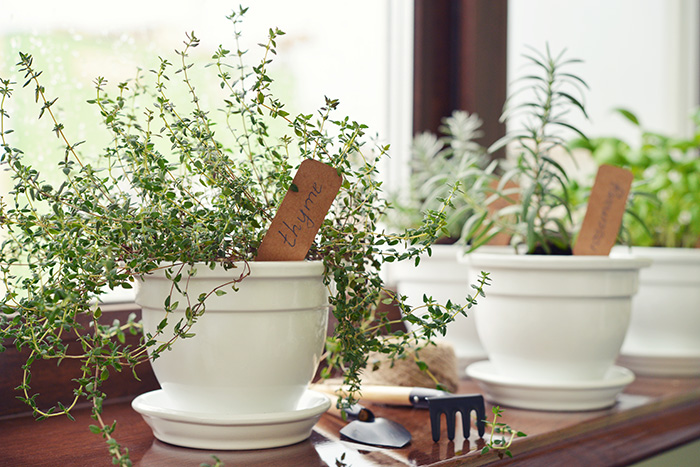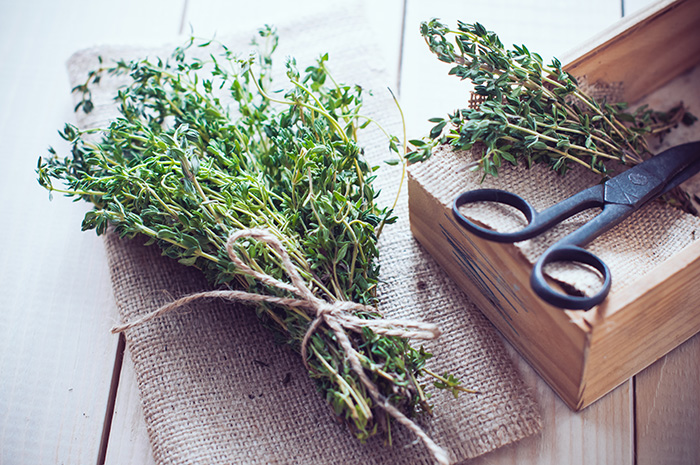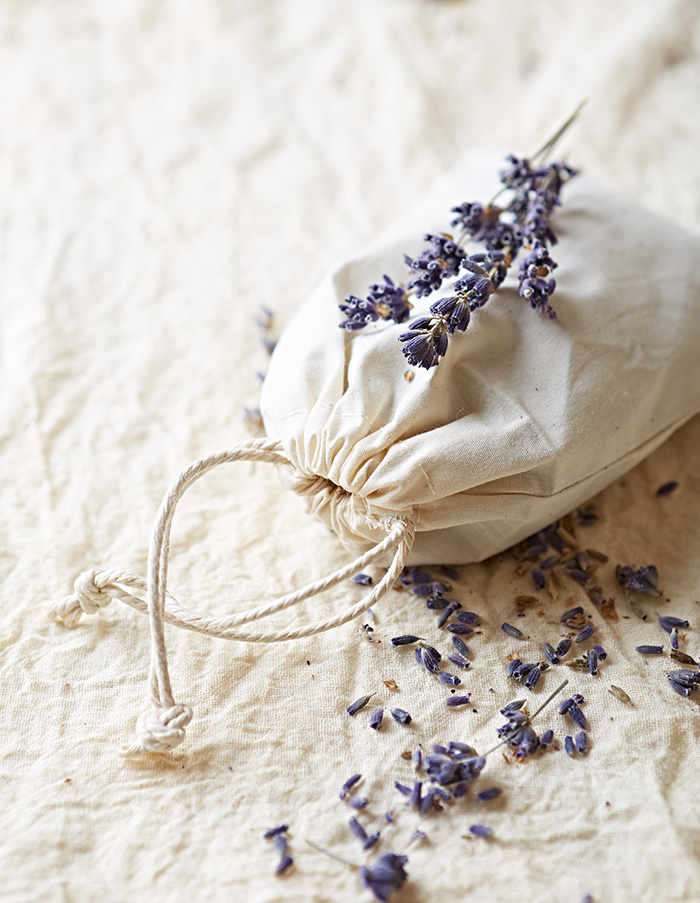Grow your own aromatic herb garden
© Shutterstock
Herbs not only enhance your cooking, but if you’re selective the harvest can be used to scent, decorate and calm your home too
The start of the year is a great time to plan ahead, and a herb garden is the perfect project to keep you busy while much else in the garden is dormant. Grow herbs on a patio, balcony or window box, and you’ll have a beautiful garden that will supply you with the herbs you love to use throughout the year.
What to grow
When selecting which herbs to grow think about what you’d like to use them for: scent, seasoning or decoration, or a mixture of all three? Consider the environment, soil type and aspect your patch can provide, plus whether the herb is annual (germinates, flowers and dies in one year), biennial (two-year lifecycle, growing roots, stems and leaves in the first year, flowers and seeds in the second) or perennial (regrows every year). Perennials will need a more permanent position than an annual.
All the information for your herbs’ needs and requirements will be on their seed packets, but when buying starter plants you may need to do your own research, as information on these can often be very limited.

© Shutterstock
Sowing and planting
Either sow from seed or buy a starter plant from your local nursery or online. Piccolo Seeds specialises in plants that are suitable for window boxes, balconies and patios, including herbs, and compact varieties of fruit and veg.
When using seeds, ensure pots or trays are 20cm deep, sprinkle the seeds over peat-free multipurpose compost, then cover lightly with extra compost. SylvaGrow’s peat-free compost is great for seedlings and starter plants, and opting to go peat-free will help protect our bogs and reduce greenhouse gas emissions. You can put your old newspapers to good use too by using a paper-pot maker – Burgon & Ball do a good one.
Your seeds should germinate within a few days; ensure the compost is kept moist by watering regularly. Once your seeds have germinated, ‘prick out’ (remove) the weaker seedlings so the strongest have room to thrive. When they’ve reached a few centimetres tall they can be moved into a larger pot.
‘Harden off’ by acclimatising your plants to outside temperatures during the daytime, then plant out into the ground or a permanent container, but only when the last frosts have passed.

© Shutterstock
Harvesting and using
Harvest your herbs in the morning on dry, sunny days. Regular harvesting promotes new growth, so be sure to cut at a nodal point (where leaf meets stem) and harvest no more than a third of a plant at a time. To dry, hang herbs upside down in your kitchen – which can make a beautiful display in itself – ensuring they are fully dried before storing in airtight containers. If it’s coming to the end of the season and you have an abundance of freshly cut herbs, these can be frozen in water or oil in ice-cube trays.
Dried and fresh herbs can be used to make everything from lavender pillows to teas – see herb expert Jekka McVicar’s guide to herbal infusions. Dried herbs such as camomile with their pretty flower heads can make a particularly striking display in vintage or glass containers. Your herbs can also be used to flavour oils and distilled to create floral waters.

© Shutterstock
Our top herb picks
- Sage (perennial) This pungent-smelling herb is an absolute delight. Drying to a beautiful grey hue, it can be used to make smudge sticks, season food and to create natural skincare. The oil can also be extracted to make candles.
- Mint (perennial) There are many varieties, including spearmint and Moroccan mint, all with slightly different flavours. This is a great herb to use fresh in teas, cocktails and Mediterranean-style salads. Spearmint is also a great ingredient for natural lip balm.
- Lavender (perennial) A popular herb for its scent, lavender is a wonderful sleep aid dried and hung above the bed or used to make pillows. Add it to baking to flavour shortbread or cakes, or sprinkle into the bath with camomile and Epsom salts for a relaxing soak. Lavender prefers being planted directly into the ground, in a well-drained sunny spot.
WORDS: ANGELA MAYNARD
Before you go...
...fancy automatic entry to all future competitions?
Simply register online today for FREE and you will get:
Automatic entry to all current and future competitions.
Access to Reclaim Inspiration - an online visual pinboard for saving all your home and style inspiration.
A regular newsletter of inspiration, ideas and advice.

Save all your articles in one place
Become a Reclaim Member to save all your home and style inspiration. Simply login or register online today for FREE and you will get:
Automatic entry to all current and future competitions.
Access to Reclaim Inspiration - an online visual pinboard for saving all your home and style inspiration.
A regular newsletter of inspiration, ideas and advice.








